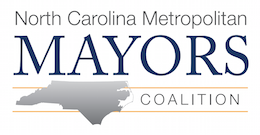New Transit-Funding Rules Make Streetcars More Desirable (Wall Street Journal)
WASHINGTON—The Obama administration said it was revamping rules on federal transit funding to funnel more of the money to streetcars, bus routes and other projects that promote “livability.”
The new policy announced Wednesday, part of a broader effort by the Obama administration to use transportation and housing programs to reduce driving, contain sprawl and create transit-related jobs, could lift the fortunes of makers of light-rail and other transit equipment sold to states and cities.
View Full Image
Bloomberg News
A Denver Light Rail car is wired at a factory in Sacramento in October.
Among more than 80 cities that could now qualify for funding are Seattle; Cincinnati; Boise, Idaho; and Fort Lauderdale, Fla., said Rep. Earl Blumenauer (D., Ore.), who led the push for a federal program designed to promote transit projects. Transit-industry officials said many projects had been stymied by a Bush administration policy requiring the government to evaluate projects based largely on reducing commuting times at the lowest possible expense.
HNTB Corp., an infrastructure firm that serves federal, state, and other clients, is working on a commuter-rail project in Indianapolis that could benefit from the change, said Liz Rao, the firm’s national public-transit services chairwoman.
The company is also working with clients on high-speed rail lines in California that will be “major hubs” for communities, said Ms. Rao, who expects to see steel and rail-car makers and companies in the solar-power industry benefit from the change.
Chandra Brown, president of streetcar maker United Streetcar LLC in Clackamas, Ore., said the company has been working for years to get the funding formula reworked. The old “method was ‘how do you move the most people the greatest distance in the quickest time,’ but that’s not necessarily indicative of the benefits,” she said, adding that the change “makes sure projects get credit for being green.”
United Streetcar, which typically sells streetcars for between $3 million and $4 million each, currently has about $50 million in streetcar orders, including six under contract with Portland, Ore., and seven with Tucson, Ariz., she said.
Of the 80 or so cities considering streetcar development, about a dozen are “very close” to actually implementing a system, she said. “This will trickle down to us, so we’ll be hiring more welders and fitters and machinists and electricians that are going to be putting these cars together.”
Transportation Secretary Ray LaHood, who announced the policy change at a conference in Washington, said the shift would determine how the Federal Transit Administration awards some $2 billion a year in transit-construction funds. This money, awarded under a program known as “New Starts and Small Starts,” is intended to help state and regional agencies build commuter rail, light rail, heavy rail and bus rapid-transit projects.
Mr. LaHood said the administration would immediately rescind the “budget restrictions” enacted by the Bush administration and focus on evaluating projects based on the environmental, community and economic-development benefits, as well as on congestion relief.
Jeff Rosen, a general counsel for the Department of Transportation during the Bush administration and now a partner in Washington law firm Kirkland & Ellis, said one danger of using noneconomic criteria was that it risked politicizing the process. “When jurisdictions are pushing to get their projects approved, if there are not clear economic criteria, there’s more risk” that influential members of Congress will win favor, Mr. Rosen said. He also said that using criteria geared toward multiple “soft” objectives raised the risks of “achieving none of them.”
Mr. Blumenauer said many cities are in varying stages of streetcar planning, but “nobody was applying
Portland, which managed to receive $75 million of funding under the program last year to expand its existing downtown streetcar, has generated significant new development alongside the streetcar, including retail space, housing and offices, said Mr. Blumenauer.
President Barack Obama has pushed agency heads to work together to encourage cities and suburbs to promote walking, biking and public transportation as alternatives to driving. Mr. Obama has called for the DOT and the Department of Housing and Urban Development, for example, to coordinate plans for transit and housing projects so people can find jobs and housing closer to transportation hubs.
Under the new policy, some dollars that might have gone to projects that emphasized longer commutes, such as a rail line between major cities, could now be shifted to smaller local projects that serve more-compact areas.
Federal Transit Administration Chief Peter Rogoff cited the planned expansion of light-rail service in the Minneapolis-St. Paul area as an example of a project that could benefit. The FTA wants the plans for light-rail service between the Twin Cities to be altered so that lower-income, mostly minority communities between the cities have greater access to the line.
Write to Melanie Trottman at melanie.trottman@wsj.com and Josh Mitchell at joshua.mitchell@dowjones.com
By MELANIE TROTTMAN And JOSH MITCHELL


